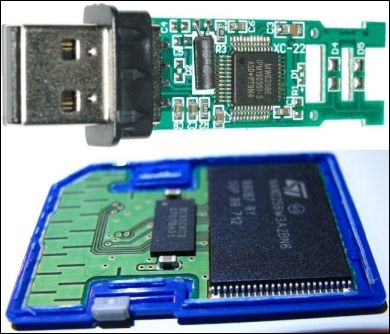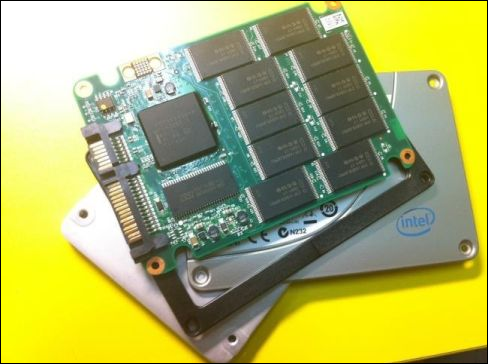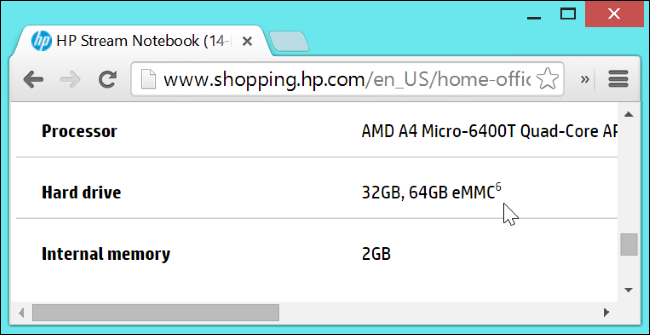EMMC or SSD: Every Solid-State Storage isn’t Equal
Do you think every solid-state storage is equally fast like a SSD? Its important to know that “eMMC” is a flash storage that you will see in every cheap tablet and laptop. But it’s a slower as well as cheaper alternative to your traditional SSD seen in most expensive computers.
Actually, eMMC storage have many features same as SD cards. Indeed, it is a flash memory, however— just it wouldn’t be fast and speedy like a SD card— so we can say that eMMC storage cannot in reality compete with our expensive computer’s SSD.
USB and SD Cards Do Have Flash Memory, Although…
Flash memory—or we say a NAND flash memory—that we see in every USB flash drive and SD card that we buy. A USB flash drive contains a memory chip located on its PCB, basic controller as well as its USB interface. An SD card has a memory chip on its circuit board and SD controller. USB flash drives and SD cards both are simple, since they are designed for being cheap in cost. There is no sophisticated firmware or any kind of advanced feature in the SSD.

You will find different kinds of “speed classes” in SD cards—but the slow SSD’s will always be very slow. Installing an operating system on that particular SD card is possible, but this could be a wrong option since they are quite slow than the slowest ones.
Solid-State Drives – More Sophisticated
A solid-state drive won’t have the components found crammed in the SD card or flash drive. They have NAND chips, for sure—however there are more NAND flash memory chips in a SSD therefore they are faster and of better-quality.
SSDs possess a controller and a firmware giving absolutely great advanced features. This controller has the capacity to spread, read as well as write operations on its chips, so the speed isn’t of one chip only. It’s RAID configuration— which uses multiple chips simultaneously to increase the speed in a better way. While writing on a SSD, its drive writes to twenty various NAND flash chips, whereas SD card uses one chip which might take a lot more time.

The firmware of a SSD performs a wear-leveling operation so that the data written to its drive is evenly spread through the physical drive and this prevents the wearing out of the flash memory. The controller disttributes this memory to our computer but the order is consistent order so that the computer behaves correctly, however the drive keeps shuffling things in its background. SSDs support many more features such as TRIM for speeding things. You do not require “SSD optimization” utility for the reason that firmware is optimizing its drive automatically, shuffling the data for a much better performance.
eMMC Explained
A MultiMediaCard (MMC) resembles same like any SD card. SD cards are improving in the terms of their standards and advancement over MMC hence they got supplanted in large amounts in many new devices. Nowadays, most of the devices opt for a slotof SD card rather than a MMC.
If you see you will notice that the internal drive of an eMMC is not sophisticated with speed and features as compared to an SSD. Infact, it’s an MMC embedded on the device’s motherboard. Same as SD cards, even MMC cards as well as their interfaces are slower compared to an SSD. The controller of an eMMC makes is bootable therefore it’s suitable for any system drive in Androids, Windows or Chrome OS laptops and tablets that are sold at low costs.
On the other hand, eMMC does not have a firmware, multiple memory chips, good quality hardware, and better interface which actually makes an SSD faster. Same as SD cards are slower than the internal SSDs, even eMMC storage is slower than a sophisticated SSD.
If you notice you will see eMMC in many portable electronics such as cell phones or digital cameras. It will have a push towards being super-cheap costing about $99 for tablets or $199 for laptops. This is because cheap tablets or laptops are being built and sold with only eMMC drives. Once you see the specification you will come to know whether that device has an eMMC or not. In case the device is very-cheap, it may have an eMMC rather than an SSD.

eMMC Is not Bad, But Not Fastest Also
We are not saying that there is something wrong with an eMMC—in this article. It is possible that your digi cam may not need an SSD with an increased size, more complexity and high price. But, when you are buying thinking to buy a tablet or a laptop, eMMC will have more apparent limitations. It essential to know that storage capacity of all eMMC isn’t created equal— that’s why some eMMC are slower compared to others. On the other hand, every eMMC storage is slower comparing to a SSD.
Performance wise, storage benchmarks are often searched in an eMMC- it is a device based question though— of course we shouldkeep in mind that some devices will be faster while some may not. Thanks to advances in the hardware and eMMC new standards which are making them faster. In case, you are some serious laptop geek, you would not want opt for some eMMC-storage in your Windows —even if you are saving some good amount of money.
Related: The Best Method to Back Up Your Computer
Image Credit: mitpatterson2010 on Flickr, Darron Birgenheier on Flickr and Andreas. on Flickr (combined), Zhou Tong on Flickr